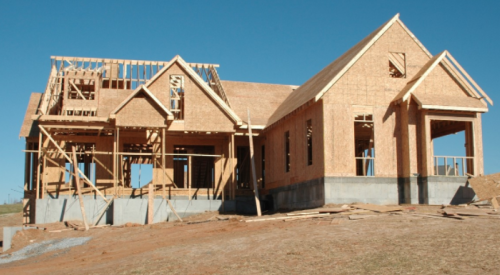|
Integral to Fairmont Homes' commitment to lean manufacturing and employee involvement is its color-coded inventory system. At each station or work cell in the plant, a number of different materials might be at the ready for installation into a manufactured home. The materials are stacked or organized in a standardized way so production team members can see exactly how much material is on hand.
| A visual guide on each material storage bin means everyone tracks inventory. Here, 250 units (in the green section) should be available. At 100 units (yellow), the supply is low, and at 50 (red) replenishing the stock is critical. |
The system was developed according to the 5s method perfected by Japanese companies. Team members complete five tasks sort, set in place, shine, standardize and sustain to create and maintain an efficient process.
CEO Jim Shea says the color-coded inventory system is remarkably simple. Materials are classified as A, B or C high-value, medium-value or lower-value. While inventories of high-value materials such as appliances are controlled at a higher level of plant management, many medium- and low-value materials are tracked and ordered on the floor through the input of the production employees using them.
Each container or area where a material is stored is marked in a graduating scale with three colors. Green means there is a ready supply, yellow indicates that material is running low, and red tells the operator in that cell that getting more materials is critical to the production flow. The operator reports material levels to the supervisor, who then makes sure the materials are ordered or have been ordered by the materials manager and will be at the factory, in their proper storage areas, on time.
Shea concedes that getting materials to Fairmont in a timely, efficient manner was a major hurdle. Deliveries would arrive at all hours of the workday, causing delays in stocking, increased investment in handlers, and relationship problems with delivery people who had to wait in line to unload. The solution: A strict schedule was devised so that suppliers had a precise time of day and day of week to deliver to Fairmont. Although difficult to implement, the system has allowed Fairmont to reduce its number of material handlers by 50% and receive more frequent, reliable deliveries.












